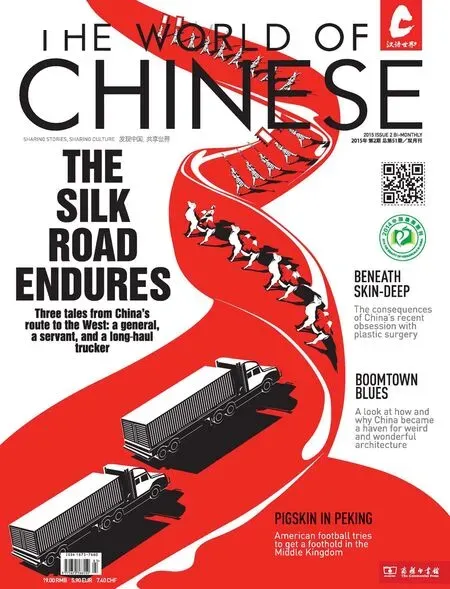NOSTALGIA AND THE CAMERA
GALLERY
NOSTALGIA AND THE CAMERA

The Coloured Sky: New Women II, 2014
As an artist known for beautiful cinematography, could you tell us about your cinematographic infuences?
Because of my academic training in painting, a lot of elements from paintings including traditional, Chinese, Western, and contemporary art are important nutrients for my own works. There are many good artists and artworks that aid my creative process on a subconscious level. In terms of (infuences from) flm, I like Godard, Fellini, Jim Jarmusch, Béla Tarr, as well as early
Chinese flms, especially Spring in a Small Town directed by Fei Mu.
Why did you decide to mainly use video as a medium rather than oil painting, your academic focus?
Although painting and flm are different mediums, for creators they arrive at the same end, or as the saying goes,“all roads lead to Rome”. To me, sometimes creating flm is like an alternate form of painting: using an alternate brush to create an alternate kind of painting.
Themes relating to old Shanghai and women frequently appear in many of your works, what is the reason for this preference?

Yang Fudong (杨福东)
Enigmatic, flm-noirish, oriental, and existential, Yang Fudong is a well-known contemporary Chinese artist with quite an impressive portfolio. Working mainly with video, Yang’s frst feature-length flm Estranged Paradise won international praise, as did Seven Intellectuals in a Bamboo Forest and Ms. Huang at M Last Night. His works are infuenced by both classical Chinese aesthetics and Western cinematography. His new fve-channel video installation The Coloured Sky: New Women II, commissioned by the Australian Center for the Moving Image, is being shown at an exhibition which concludes in March.
Everyone has their own yet vivid remembrances of this so-called “past”. This kind of nostalgia in fact embodies beautiful visions for the future. To me, women symbolize a certain beauty. Perhaps femininity represents elegance and rationality, a perfect ideal state. I went to college in Hangzhou, lived in Shanghai, and was born in Beijing. I call the environment in which I reside now “living in the South”. Its city life, geographical, and climatic characteristics all distinctively differ from the living environment in the North. It reminds me of an old saying: each land fosters its own people (一方水土养一方人).
Could you briefy talk about The Coloured Sky: New Women II?
New Women II is no longer a flm that discusses dreams or has a grand narrative. Instead, the broad perspective on life and ideals narrows to the state of a physical “room”. For me, New Women II has a childhood feel to it. After fnishing a piece of candy, place its colorful wrapper against the sun and it will defect all sorts of prismatic colors, like a fantastic rainbow.
How do you view the relationship between the narrative and cinematography?
Different people hold different conceptions of the narrative. I think their relationship is one of “allowing each other to be the imagined”.
In your works, there are always mixtures of the old and the new, the traditional and the modern, as well as recurring contrasts between the urban and the rural. Nostalgia and melancholy also



(Top) The Coloured Sky: New Women II, 2014 (Bottom) The Nightman Cometh, 2011
seem to be pervasive. Could you tell us more about this?
Oftentimes, the creation of an artwork isn’t completed in one step. When an idea is born in your head, you need additional time to nurture it. Perhaps one year, two years, or even fve years or eight. Respect the real ideas deep in your heart, face life with authenticity and geniality, then at a certain point the idea will become indelible and haunts you. You can then realize it, and from it naturally comes art.- WElJlNG ZHU (祝伟婧)

